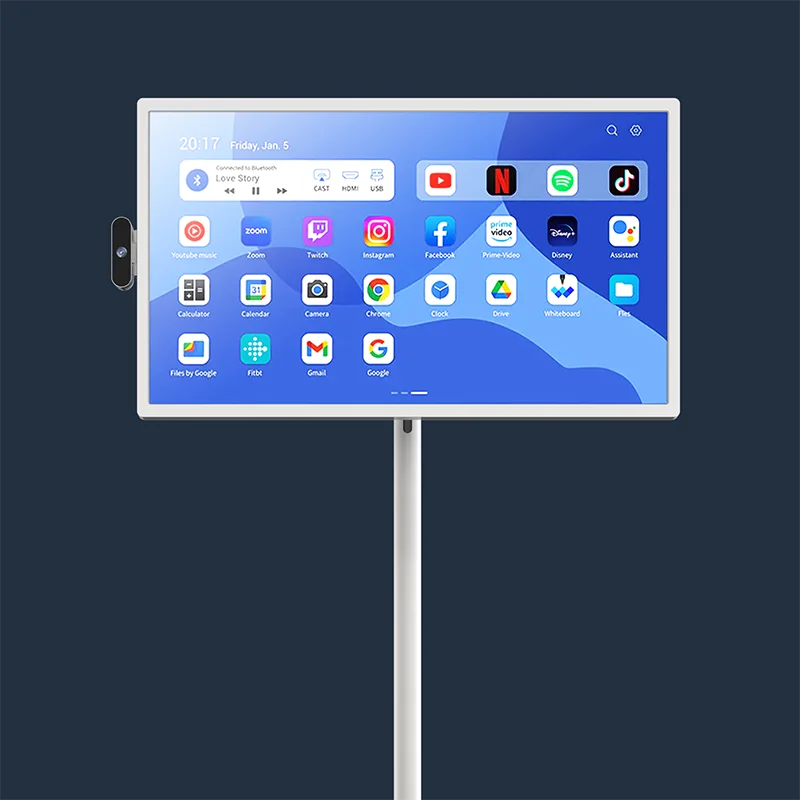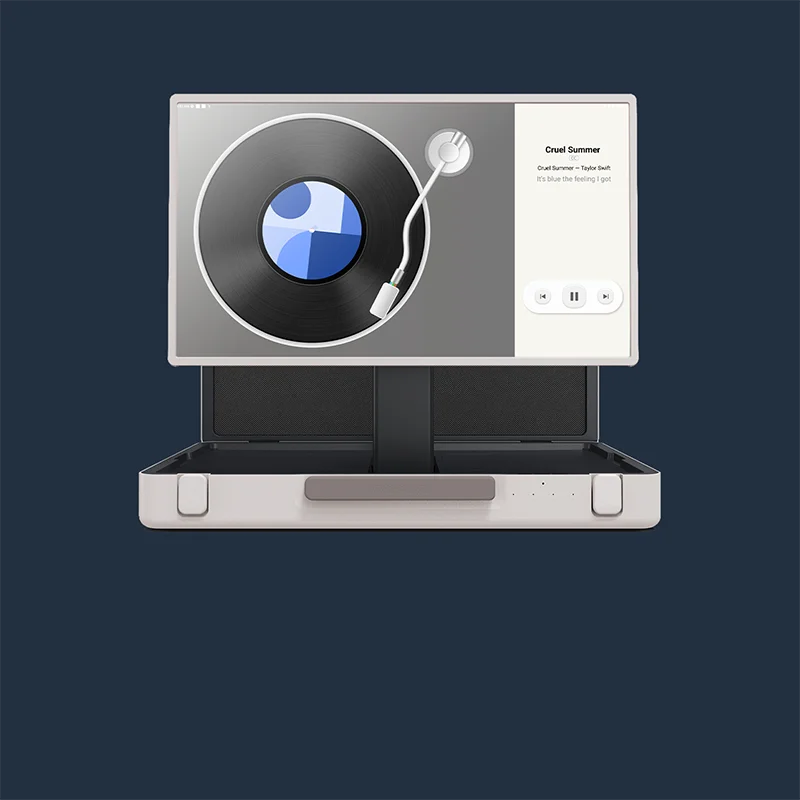Ever feel like your day evaporated into a fog of notifications, half-finished tasks, and the nagging sense you accomplished nothing of value? You're not alone. The solution isn't another productivity app; it's a fundamental shift called Focus Time.
Drowning in Distractions? Why Your Brain Needs Focus Time
The modern workplace is a battlefield for your attention, and right now, you're losing. The casualties are your productivity, your peace of mind, and your company's bottom line. Recent data paints a grim picture: nearly 90% of U.S. workers get distracted at least once every day, with the average person losing a stunning 1 hour and 18 minutes of productive time daily. Annually, that balloons to nearly 340 hours of lost potential per employee, contributing to an estimated $650 billion drain on U.S. businesses every year.
But the true cost isn't measured in minutes; it's measured in cognitive wreckage. Neuroscience reveals a devastating phenomenon known as "attention residue". When you switch from a primary task to check a "quick" email or Slack message, your brain doesn't instantly pivot. A part of your cognitive capacity remains stuck on the previous task. The result? It takes an average of 23 minutes and 15 seconds to fully regain your original level of deep concentration. With over 80% of employees admitting they can't go a full hour without an interruption, many of us spend our entire day in a state of fractured focus, never reaching our peak cognitive performance.
This constant state of interruption does more than just slow us down; it wears us out. Many professionals feel completely drained and overwhelmed, and frequent interruptions can double error rates while increasing stress and exhaustion. The relentless barrage of digital noise isn't just an annoyance; it's a systemic problem actively preventing us from doing our best work.
Focus Time is More Than Just "Do Not Disturb"
So, what's the antidote to this epidemic of distraction? It's a concept championed by Georgetown computer science professor Cal Newport: Deep Work. He defines it as professional activity performed in a state of distraction-free concentration that pushes your cognitive abilities to their limit. These efforts create new value, improve your skills, and are hard to replicate. Focus Time is the practical application of this philosophy—it's the scheduled, protected period you dedicate exclusively to deep work.
Think of it as the difference between jogging on a crowded sidewalk and sprinting on a dedicated track. The opposite of deep work is "shallow work": the non-cognitively demanding, logistical tasks often performed while distracted, like responding to emails or attending status meetings that could have been a memo. While necessary, shallow work doesn't move the needle on your most important goals.
Newport’s central argument is that the ability to perform deep work is becoming increasingly rare at the exact moment it is becoming increasingly valuable in our economy. As AI handles more routine tasks, the premium on human creativity, complex problem-solving, and strategic thinking—all products of deep work—will only grow.
The power of Focus Time is rooted in brain science. Uninterrupted concentration allows your brain to enter a "flow state," a mental sweet spot of peak performance and creativity. During these periods, your prefrontal cortex—the brain's command center for planning and problem-solving—becomes fully activated. Neurologically, this intense focus strengthens the connections between neurons, literally rewiring your brain to learn complex skills faster and more efficiently. Each session of Focus Time isn't just about finishing a task; it's a cognitive workout that builds your capacity for concentration over time.
Here's How You Can Implement Focus Time
Transitioning from a reactive, distraction-driven day to a proactive, focused one requires a deliberate system. Here’s a five-step plan to build your Focus Time ritual.
1. Identify Your High-Impact Tasks
Before you can protect your time, you must know what you're protecting it for. Not all tasks are created equal. The key is to apply the 80/20 Rule, which suggests that 80% of your results will come from just 20% of your efforts. These high-leverage activities are your candidates for deep work.
To identify them, ask yourself a few simple questions about a task: Does it require intense, undistracted focus? Does it create significant new value? Would it be difficult for someone else to replicate quickly?. Activities like developing a business strategy, writing a crucial report, coding a complex feature, or analyzing dense data are prime examples of deep work. Everything else—replying to routine emails, scheduling meetings, filing expenses—is shallow work.
2. Schedule Your Time Blocks
Once you know your priorities, you must give them a home on your calendar. This is where time blocking comes in. Instead of working from a never-ending to-do list, you assign every minute of your day a specific job.
For maximum effectiveness, align your schedule with your brain's natural energy cycles. Our bodies operate on ultradian rhythms, which are roughly 90-minute cycles of high-to-low energy. Plan your deep work in focused 90-minute blocks, followed by 15- to 20-minute breaks. During these breaks, completely disconnect from your screens. Take a walk, stretch, or just let your mind wander. This allows your brain to replenish the neurochemicals like dopamine that are essential for concentration.
For your shallow work, use a technique called "task batching." Group similar low-effort tasks together into a single time block. For instance, instead of checking email every 15 minutes, dedicate a 30-minute block in the late morning and another in the afternoon to clear your inbox. This method minimizes the cognitive cost of context switching.
3. Eliminate Distractions
Your environment is a powerful force that can either support or sabotage your focus. You need to become an architect of your own concentration.
Start with your physical space. A cluttered desk creates a cluttered mind, increasing your cognitive load and spiking stress hormones. Keep your workspace clean and minimalist, with only the essentials for the task at hand.
Next, conquer your digital space. Turn off all notifications on your phone and computer—email, social media, news alerts, all of it. Close every browser tab and application not directly related to your current task. For a true focus boost, put your phone in another room. Research shows that the mere presence of a smartphone, even when it's off, reduces available cognitive capacity.
4. Communicate Your Boundaries
Setting boundaries isn't about being uncooperative; it's a professional strategy to deliver the high-quality work everyone expects from you. You must teach people how to treat your time.
Communicate your intentions clearly and proactively. Let your team know, "I'll be in a focus block from 9:00 to 10:30 AM to finalize the quarterly report. I'll be available to connect after that." This sets expectations and frames your unavailability in the context of a shared goal.
Leverage technology to reinforce these boundaries. Block out Focus Time on your shared digital calendar. Use "Do Not Disturb" or custom statuses in Slack or Teams to signal when you're in deep work mode. A simple status like "Focusing on Project X—will respond after 11 AM" can prevent dozens of interruptions.
5. Reflect and Adjust
No productivity system is perfect from day one. The final step is to create a feedback loop for continuous improvement. At the end of each week, take 15 minutes to conduct a simple review. Ask yourself: What worked well? What challenges arose? When did I get pulled off track?.
Track your lead measure: the number of hours you successfully spent in deep work each week. This simple metric is the most important indicator of your progress. If you only managed two hours this week, aim for three next week. This process of reflection and incremental adjustment will help you build a resilient and effective Focus Time habit.
If building the habit feels shaky, borrow a step-by-step self-discipline framework to lock in consistent Focus Time.
A Digital Calendar Can Be Your Command Center for Focus
A plan is only as good as its execution, and the cornerstone of execution is your calendar. While standard tools like a google calendar display on your phone are a start, they are fundamentally flawed for managing Focus Time. They exist on devices that are epicenters of distraction, forcing your schedule to compete with an endless stream of notifications. Juggling multiple personal and professional calendars on a small screen quickly becomes a cluttered, confusing mess.
To truly commit to Focus Time, you need a dedicated command center. A large, persistent digital calendar display transforms your schedule from a series of fleeting notifications into a tangible, ambient part of your environment. It acts as a constant, gentle reminder of your priorities, turning your intentions into concrete commitments.

The Apolosign 27" 4K Digital Calendar is the ultimate tool for this job. Its brilliant, expansive 27-inch 4K screen presents your entire day, week, or month with stunning clarity, visible from across the room. It seamlessly syncs and consolidates all your schedules—Google Calendar, Outlook, iCloud—into one unified work planner, eliminating the chaos of fragmented information. Its unique Dual-Mode functionality allows you to switch between a distraction-free, immersive calendar view for planning and an Android mode to manage to-do lists or smart home devices, all without any subscription fees. And with an AG Anti-Glare Screen, it remains perfectly readable even in a bright kitchen or sunlit home office, right where life and work actually happen.
Use This Free Template to Plan Your Focus Time
Ready to get started? Here is a simple, science-backed template you can copy and adapt for your own schedule. It’s designed around two 90-minute deep work sessions, which is a powerful starting point for anyone new to this practice.
Today's High-Impact Goal: [Insert your single most important task here]
8:30 AM - 8:45 AM: Morning Prep & Planning (15 mins)
Review today's goal.
Outline the steps for your first deep work block.
Close all distractions. Pour coffee.
8:45 AM - 10:15 AM: Deep Work Block 1 (90 mins)
Undivided attention on your high-impact goal.
No email, no phone, no interruptions.
10:15 AM - 10:35 AM: Recharge Break (20 mins)
Step away from your desk.
Walk outside, stretch, hydrate. Do not check your phone.
10:35 AM - 11:15 AM: Shallow Work Block (40 mins)
Batch process emails and messages.
Handle quick administrative tasks.
11:15 AM - 12:15 PM: Lunch / Real Break (60 mins)
Eat away from your workspace.
12:15 PM - 1:45 PM: Deep Work Block 2 (90 mins)
Focus on a second high-impact task or continue the morning's project.
1:45 PM - 2:00 PM: Daily Shutdown (15 mins)
Log deep work hours.
Review progress.
Briefly plan tomorrow's high-impact goal.
In 2025 and beyond, the ability to concentrate will be a superpower. Focus Time isn't about working harder; it's about working smarter on the things that truly matter. It's a deliberate practice that requires a system, not just willpower. Reclaiming your attention from the endless digital noise is the first step toward producing work that you're proud of and building a life of intention and fulfillment. Start today. Block off your first 90 minutes. Your future self is destined to be bright.
FAQs
Q1. How much Focus Time should I aim for each day?
For beginners, one or two 90-minute blocks is a fantastic start. Most research suggests that even seasoned experts can only sustain about four hours of true deep work per day. The goal is consistent practice, not daily marathons. Quality over quantity is key.
Q2. My job is too collaborative for long, uninterrupted blocks. What can I do?
Even in a highly collaborative role, you can find pockets of time. Start with 60-minute or even 45-minute blocks. The crucial part is creating a regular rhythm. Communicate your schedule clearly to your team and use a shared google calendar display so they know when you're heads-down versus when you're available for collaboration. You'll often find that many "urgent" requests can comfortably wait an hour.
Q3. How is a dedicated digital calendar display like Apolosign better than just using my laptop's calendar?
A calendar on your laptop or phone is constantly fighting for your attention against email, chat notifications, and endless browser tabs. A dedicated, wall-mounted digital calendar like the Apolosign serves as a single, unambiguous source of truth for your day. Its large, always-on screen makes your schedule and commitments tangible and visible, reducing the mental energy required to remember what's next and stay on track.
Q4. What's the best way to get my family or team on board with respecting my Focus Time?
Visibility is your best tool. When your focus blocks are clearly marked on a central digital calendar display that everyone in the household or office can see, it acts as a constant, polite reminder of your availability. Frame it positively: "I'm blocking this time so I can focus on getting X done for us." When you respect their focus time in return, you build a culture of mutual respect for deep work.










